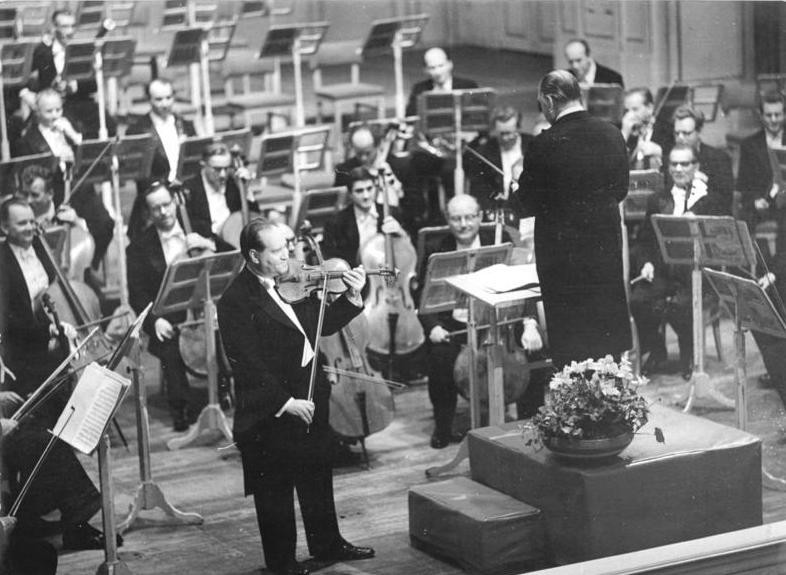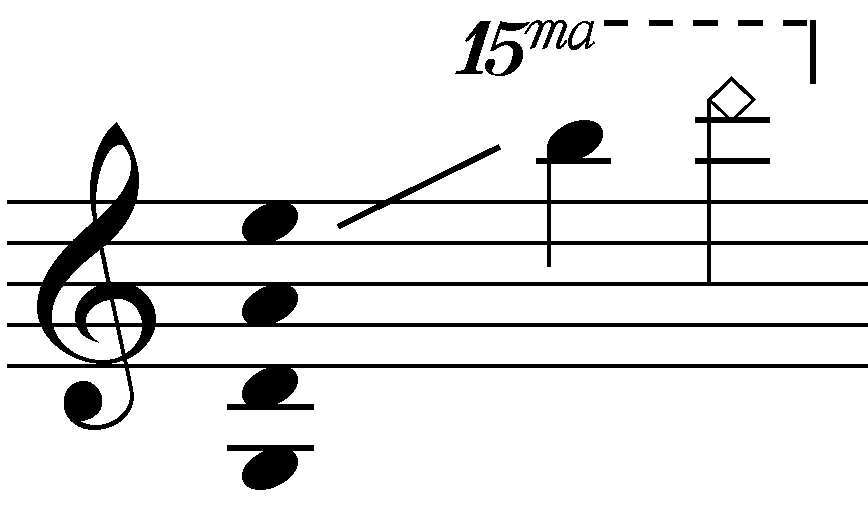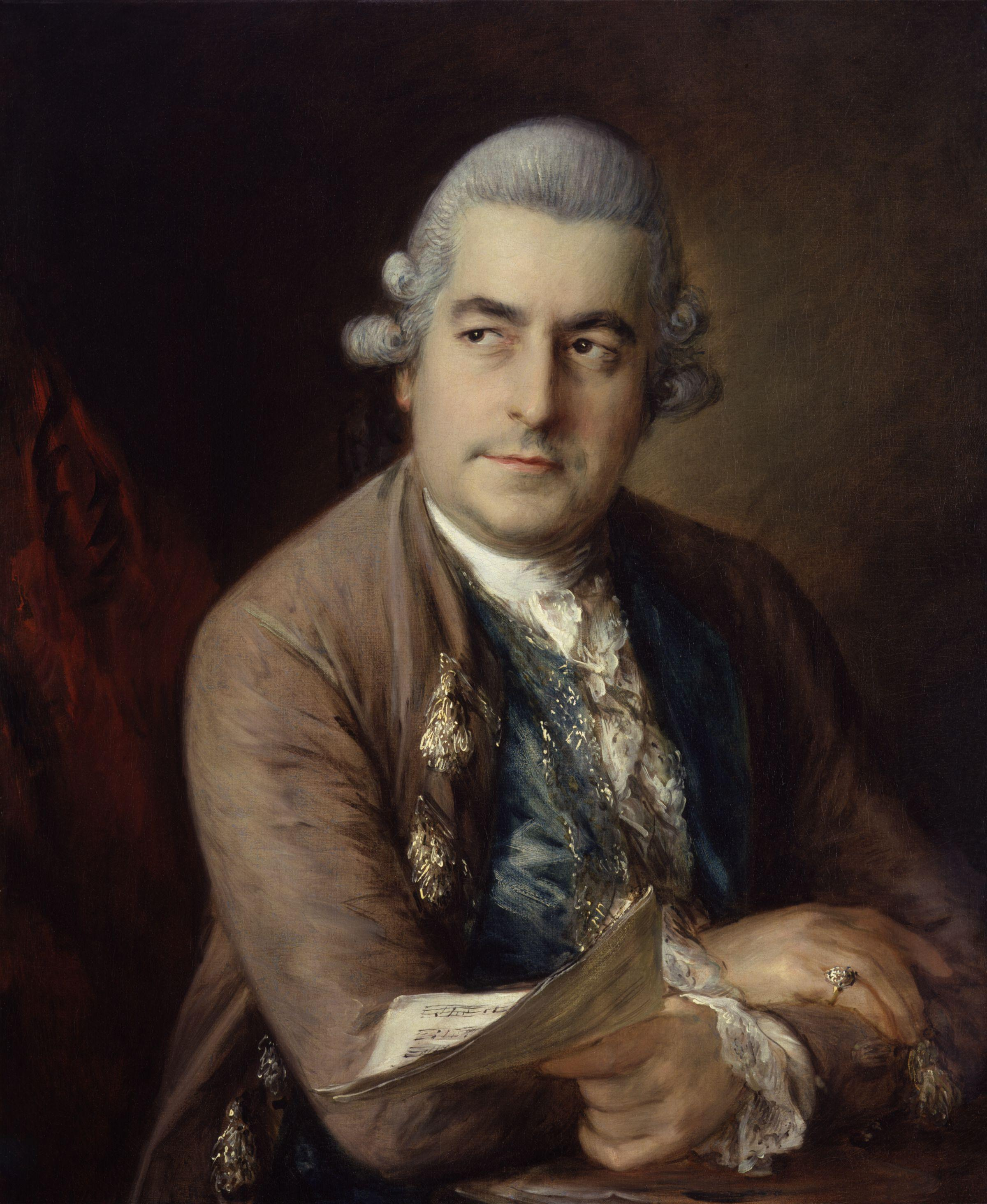|
Adélaïde Concerto
The Adélaïde Concerto is the nickname of a violin concerto in D major attributed to Wolfgang Amadeus Mozart and given the catalogue number K. Anh. 294a in the third edition of the standard Köchel catalogue of Mozart's works. Unknown until the 20th century, this concerto was later discovered to be a spurious work by Marius Casadesus. It was given a new number in the sixth edition of the Köchel catalogue, K. Anh.C 14.05, as part of the Anhang C designated for spurious or doubtful works which have been attributed to Mozart at some time. Background First published in 1933 in a version for violin and piano, the concerto was said by Casadesus, the "editor", to have been arranged from a manuscript by the ten-year-old Mozart, with a title page containing a dedication to Madame Adélaïde, the fourth daughter of King Louis XV. Conveniently enough, this alleged manuscript was never accessible to later enquirers such as Alfred Einstein and Friedrich Blume, but Casadesus described it, a ... [...More Info...] [...Related Items...] OR: [Wikipedia] [Google] [Baidu] |
Violin Concerto
A violin concerto is a concerto for solo violin (occasionally, two or more violins) and instrumental ensemble (customarily orchestra). Such works have been written since the Baroque music, Baroque period, when the solo concerto form was first developed, up through the present day. Many major composers have contributed to the violin concerto repertoire, with the best known works including those by Violin concertos (Bach), Bach, Bartók, Violin Concerto (Beethoven), Beethoven, Violin Concerto (Brahms), Brahms, Violin Concerto (Bruch), Bruch, Violin Concerto (Dvořák), Dvořák, Violin Concerto (Khachaturian), Khachaturian, Violin Concerto (Mendelssohn), Mendelssohn, Mozart, Paganini, Prokofiev, Sarasate, Shostakovich, Violin Concerto (Sibelius), Sibelius, Violin Concerto (Tchaikovsky), Tchaikovsky, and Vivaldi. Traditionally a three-movement work, the violin concerto has been structured in four movements by a number of modern composers, including Dmitri Shostakovich, Igor Stravinsk ... [...More Info...] [...Related Items...] OR: [Wikipedia] [Google] [Baidu] |
Fritz Kreisler
Friedrich "Fritz" Kreisler (February 2, 1875 – January 29, 1962) was an Austrian-born American violinist and composer. One of the most noted violin masters of his day, and regarded as one of the greatest violinists of all time, he was known for his sweet tone and expressive phrasing. Like many great violinists of his generation, he produced a characteristic sound which was immediately recognizable as his own. Although it derived in many respects from the Franco-Belgian school, his style is nonetheless reminiscent of the '' gemütlich'' (cozy) lifestyle of pre-war Vienna. Biography Kreisler was born in Vienna, the son of Anna (née Reches) and Samuel Kreisler, a doctor. Of Jewish heritage, he was however baptised at the age of 12. He studied at the Vienna Conservatory between 1882-1885 under Anton Bruckner, Jakob Dont and Joseph Hellmesberger Jr., and in Paris Conservatory between 1885-1887, where his teachers included Léo Delibes, Lambert Massart and Jules Mass ... [...More Info...] [...Related Items...] OR: [Wikipedia] [Google] [Baidu] |
Violin Concertos
The violin, sometimes known as a '' fiddle'', is a wooden chordophone ( string instrument) in the violin family. Most violins have a hollow wooden body. It is the smallest and thus highest-pitched instrument ( soprano) in the family in regular use. The violin typically has four strings (some can have five), usually tuned in perfect fifths with notes G3, D4, A4, E5, and is most commonly played by drawing a bow across its strings. It can also be played by plucking the strings with the fingers ( pizzicato) and, in specialized cases, by striking the strings with the wooden side of the bow ( col legno). Violins are important instruments in a wide variety of musical genres. They are most prominent in the Western classical tradition, both in ensembles (from chamber music to orchestras) and as solo instruments. Violins are also important in many varieties of folk music, including country music, bluegrass music, and in jazz. Electric violins with solid bodies and piezoelectric p ... [...More Info...] [...Related Items...] OR: [Wikipedia] [Google] [Baidu] |
Die Musikforschung
''Die Musikforschung'' is a quarterly peer-reviewed academic journal of musicological which since 1948 is published on behalf of the Gesellschaft für Musikforschung by Bärenreiter. The editors-in-chief are Panja Mücke ( Hochschule für Musik und Darstellende Kunst Mannheim), Manuel Gervink (Hochschule für Musik Carl Maria von Weber), and Friedrich Geiger (University of Hamburg). The journal covers music history, theory, and practice. A review section discusses German and foreign-language books and scholarly editions of sheet music. Reports provide summaries of relevant congresses and conferences. Abstracting and indexing The journal is abstracted and indexed in: *Arts and Humanities Citation Index *Current Contents/Arts & Humanities * L'Année philologique *Modern Language Association Database * RILM Abstracts of Music Literature *Scopus Scopus is Elsevier's abstract and citation database launched in 2004. Scopus covers nearly 36,377 titles (22,794 active titles and 13,58 ... [...More Info...] [...Related Items...] OR: [Wikipedia] [Google] [Baidu] |
Mela Tenenbaum
Mela Tenenbaum, (Ukrainian: Мела Тененбаум) born in Ukraine, is a classical violinist and violist, also playing viola d'amore. She graduated from the Kyiv Conservatory and performed the Kyiv Philharmonic and other orchestras. She inspired composers such as Dmitri Klebanov to write pieces for her. She emigrated to the United States and was from the early 1990s concertmaster of the Philharmonia Virtuosi. She recorded works from Vivaldi to salon music, especially chamber music. Career Tenenbaum studied music at the Kyiv Conservatory and obtained a master's degree. She performed with the Kyiv Chamber Orchestra and the Kyiv Philharmonic from 1979. She was also a soloist and concertmaster with the chamber orchestra Perpetuum Mobile, an ensemble supported by the Ukrainian Union of Composers. Several Russian and Ukrainian composers wrote works for her which she premiered. Dmitri Klebanov composed for her pieces such as a viola concerto and ''Japanese Silhouettes'' for ... [...More Info...] [...Related Items...] OR: [Wikipedia] [Google] [Baidu] |
Stanley Sadie
Stanley John Sadie (; 30 October 1930 – 21 March 2005) was an influential and prolific British musicology, musicologist, music critic, and editor. He was editor of the sixth edition of the ''Grove Dictionary of Music and Musicians'' (1980), which was published as the first edition of ''The New Grove Dictionary of Music and Musicians''. Along with Thurston Dart, Nigel Fortune and Oliver Neighbour he was one of Britain's leading musicologists of the post-World War II generation. Career Born in Wembley, Sadie was educated at St Paul's School, London, and studied music privately for three years with Bernard Stevens. At Gonville and Caius College, Cambridge he read music under Thurston Dart. Sadie earned Bachelor of Arts and Bachelor of Music degrees in 1953, a Master of Arts degree in 1957, and a PhD in 1958. His doctoral dissertation was on mid-eighteenth-century British chamber music. After Cambridge, he taught at Trinity College of Music, London (1957–1965). Sadie then turne ... [...More Info...] [...Related Items...] OR: [Wikipedia] [Google] [Baidu] |
Donald Mitchell (writer)
Donald Charles Peter Mitchell CBE (6 February 1925 – 28 September 2017) was a British writer on music, particularly known for his books on Gustav Mahler and Benjamin Britten and for the book ''The Language of Modern Music'', published in 1963. Mitchell was born in London, and educated at Brightlands Preparatory School and Dulwich College, London. In 1943 he registered as a conscientious objector and his war-time service was spent in the Non-Combatant Corps. After the war, he taught at Oakfield Preparatory School, London and in 1947 founded and edited the journal ''Music Survey''; several issues appeared before he was joined in 1949 by Hans Keller and the journal was re-launched in the Music Survey's so-called 'New Series' (1949–52), whose uncompromising critical standards and pugnaciously pro-Britten and pro-Schoenberg stance brought it renown and notoriety in equal measure. Mitchell studied at Durham University 1949-50. In the 1950s he was a regular contributor to the ... [...More Info...] [...Related Items...] OR: [Wikipedia] [Google] [Baidu] |
Movement (music)
A movement is a self-contained part of a musical composition or musical form In music, ''form'' refers to the structure of a musical composition or performance. In his book, ''Worlds of Music'', Jeff Todd Titon suggests that a number of organizational elements may determine the formal structure of a piece of music, suc .... While individual or selected movements from a composition are sometimes performed separately as stand-alone pieces, a performance of the complete work requires all the movements to be performed in succession. A movement is a section, "a major structural unit perceived as the result of the coincidence of relatively large numbers of structural phenomena". Sources Formal sections in music analysis {{music-stub ... [...More Info...] [...Related Items...] OR: [Wikipedia] [Google] [Baidu] |
George Frideric Handel
George Frideric (or Frederick) Handel (; baptised , ; 23 February 1685 – 14 April 1759) was a German-British Baroque music, Baroque composer well known for his opera#Baroque era, operas, oratorios, anthems, concerto grosso, concerti grossi, and organ concertos. Handel received his training in Halle (Saale), Halle and worked as a composer in Hamburg and Italy before settling in London in 1712, where he spent the bulk of his career and Handel's Naturalisation Act 1727, became a naturalised British subject in 1727. He was strongly influenced both by the middle-German polyphony, polyphonic choral tradition and by composers of the Italian Baroque. In turn, Handel's music forms one of the peaks of the "high baroque" style, bringing Italian opera to its highest development, creating the genres of English oratorio and organ concerto, and introducing a new style into English church music. He is consistently recognized as one of the greatest composers of his age. Handel started three c ... [...More Info...] [...Related Items...] OR: [Wikipedia] [Google] [Baidu] |
Johann Christian Bach
Johann Christian Bach (September 5, 1735 – January 1, 1782) was a German composer of the Classical era, the eighteenth child of Johann Sebastian Bach, and the youngest of his eleven sons. After living in Italy for several years, Bach moved to London in 1762, where he became known as "the London Bach". He is also sometimes known as "the English Bach", and during his time spent living in the British capital, he came to be known as John Bach. He is noted for playing a role in influencing the concerto styles of Haydn and Mozart. He contributed significantly to the development of the new sonata principle. Life Johann Christian Bach was born to Johann Sebastian and Anna Magdalena Bach in Leipzig, Germany. His distinguished father was already 50 at the time of his birth—an age gap exemplified by the sharp differences in the musical styles of father and son. Even so, father Bach instructed Johann Christian in music until his death in 1750. After his father's death, he worked ( ... [...More Info...] [...Related Items...] OR: [Wikipedia] [Google] [Baidu] |
Casadesus Family
Casadesus is the surname of a prominent French artistic family. Its members include: * (1870–1954), composer and conductor ** Jules-Raphaël Casadesus, journalist, writer *** (1925–1999), writer, poet * Robert-Guillaume Casadesus (1878–1940), composer and singer known as "Robert Casa" ** Robert Casadesus (1899–1972), pianist and composer ** Gaby Casadesus (1901–1999), pianist, wife of Robert Casadesus *** Jean Casadesus (1927–1972), pianist, son of Robert and Gaby Casadesus * Henri Casadesus (1879–1947), violist and composer ** Catherine Casadesus (1902–1985), violinist ** Jacqueline Casadesus (1903–1976), pianist, singer and actress ** Christian Casadesus (1912-2014), actor, theatre manager ** Gisèle Casadesus (1914-2017), actress, daughter of Henri Casadesus *** Jean-Claude Casadesus (born 1935), conductor, son of Gisèle Casadesus **** (born 1962), lyric soprano, daughter of Jean-Claude Casadesus **** (born 1970), actor and model, son of Jean-Claude Casadesu ... [...More Info...] [...Related Items...] OR: [Wikipedia] [Google] [Baidu] |
Henri Casadesus
Henri-Gustave Casadesus (30 September 1879, Paris – 31 May 1947, Paris) was a violist, viola d'amore player, composer, and music publisher. Early life Casadesus received his early musical instruction with Albert Lavignac and studied viola with Théophile Laforge at the Conservatoire de Paris, taking first prize in 1899. From 1910 to 1917, he was the violist of the Capet Quartet. Career Along with Camille Saint-Saëns, Casadesus founded the "Société des instruments anciens" in 1901. The society, which operated between 1901 and 1939, was a quintet of performers who used obsolete instruments such as the viola da gamba, or Casadesus's own instrument, the viola d'amore. The quintet was also notable in its day for premiering rediscovered works by long-dead composers. It was later discovered that Casadesus and his brothers, notably Marius Casadesus, wrote these works. The Adélaïde Concerto, allegedly by Wolfgang Amadeus Mozart, is sometimes mistakenly attributed to Henri ... [...More Info...] [...Related Items...] OR: [Wikipedia] [Google] [Baidu] |





